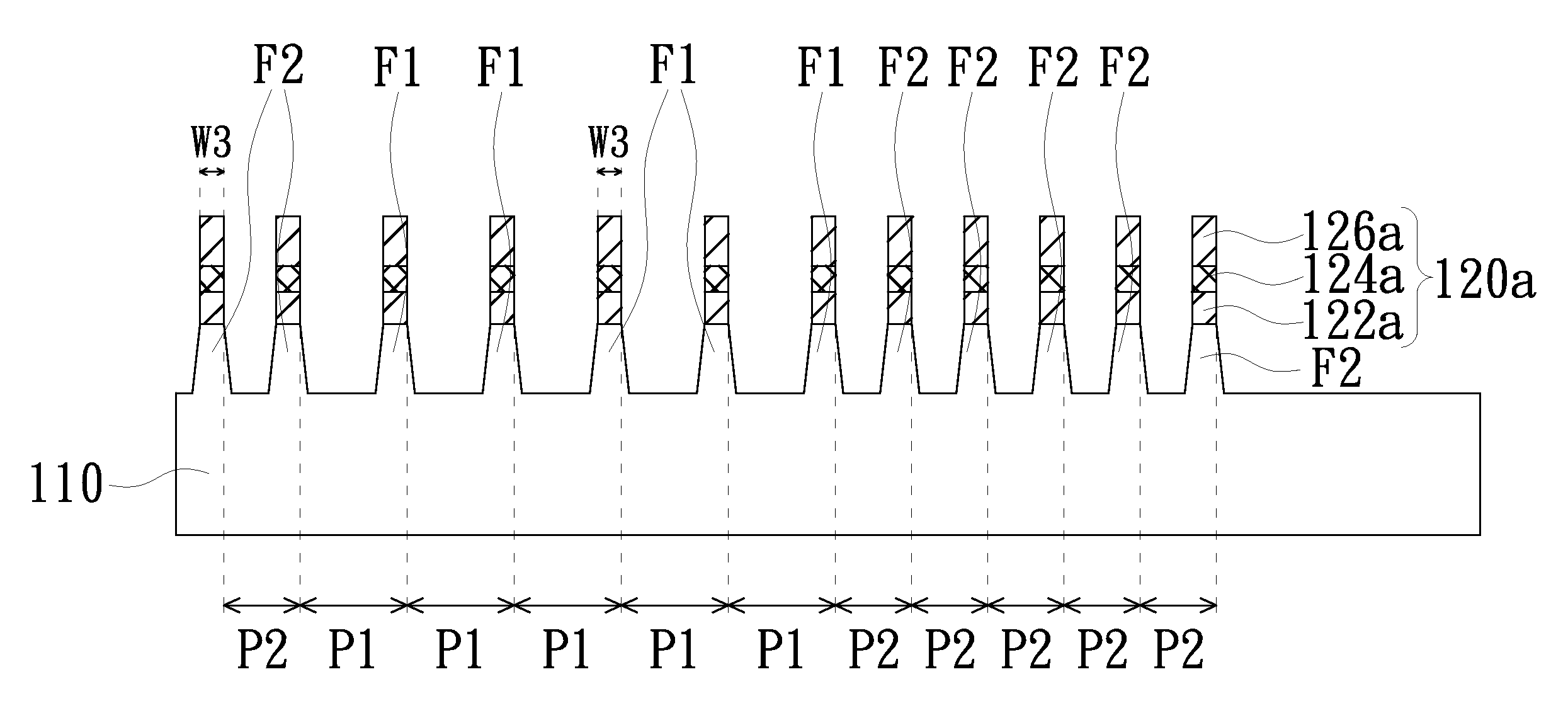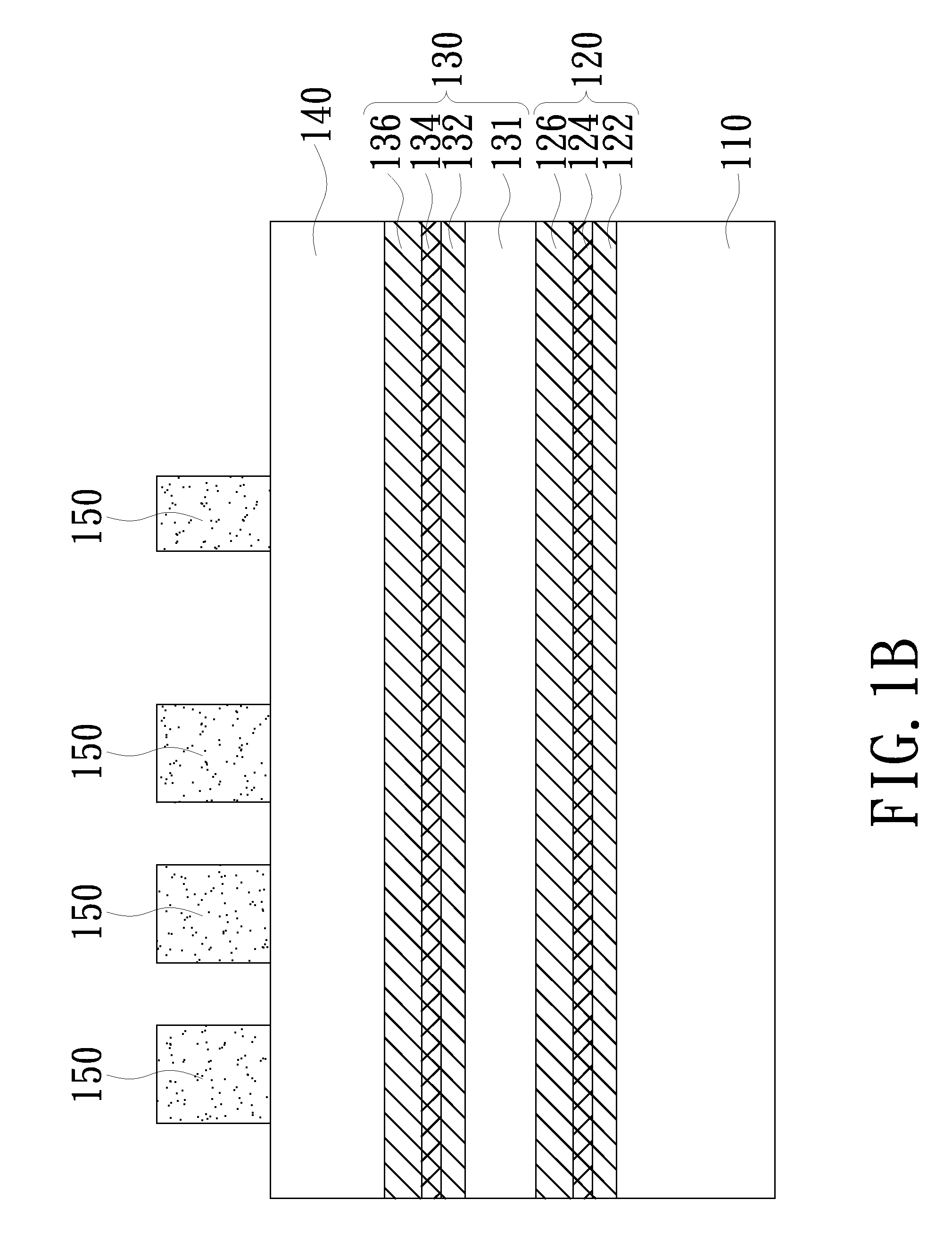Method for manufacturing finFET
a transistor and field effect technology, applied in the direction of semiconductor devices, electrical equipment, basic electric elements, etc., can solve the problems of inapplicability of current photolithography process technology to the exposure of photoresist patterns with a pitch less than 78 nm, difficult to shrink the device's size, and inability to increase the density of fin-shaped structures
- Summary
- Abstract
- Description
- Claims
- Application Information
AI Technical Summary
Benefits of technology
Problems solved by technology
Method used
Image
Examples
Embodiment Construction
[0011]The invention will now be described more specifically with reference to the following embodiment. It is to be noted that the following descriptions of the preferred embodiment are presented herein for purpose of illustration and description only. It is not intended to be exhaustive or to be limited to the precise form disclosed.
[0012]FIGS. 1A-1N are flowcharts illustrating a method for manufacturing a FinFET according to one embodiment of the invention. Firstly, by referring to FIG. 1A, a method for manufacturing a FinFET according to the embodiment includes providing a substrate 110, wherein the substrate 110 is a silicon substrate or a doped silicon substrate. Next, a stacked multi-layer structure is formed on the substrate 110, for example, a first multi-layer structure 120 and a second multi-layer structure 130 are formed and stacked sequentially on the substrate 110, respectively. Here, both of the first multi-layer structure 120 and the second multi-layer structure 130 a...
PUM
 Login to View More
Login to View More Abstract
Description
Claims
Application Information
 Login to View More
Login to View More - R&D
- Intellectual Property
- Life Sciences
- Materials
- Tech Scout
- Unparalleled Data Quality
- Higher Quality Content
- 60% Fewer Hallucinations
Browse by: Latest US Patents, China's latest patents, Technical Efficacy Thesaurus, Application Domain, Technology Topic, Popular Technical Reports.
© 2025 PatSnap. All rights reserved.Legal|Privacy policy|Modern Slavery Act Transparency Statement|Sitemap|About US| Contact US: help@patsnap.com



